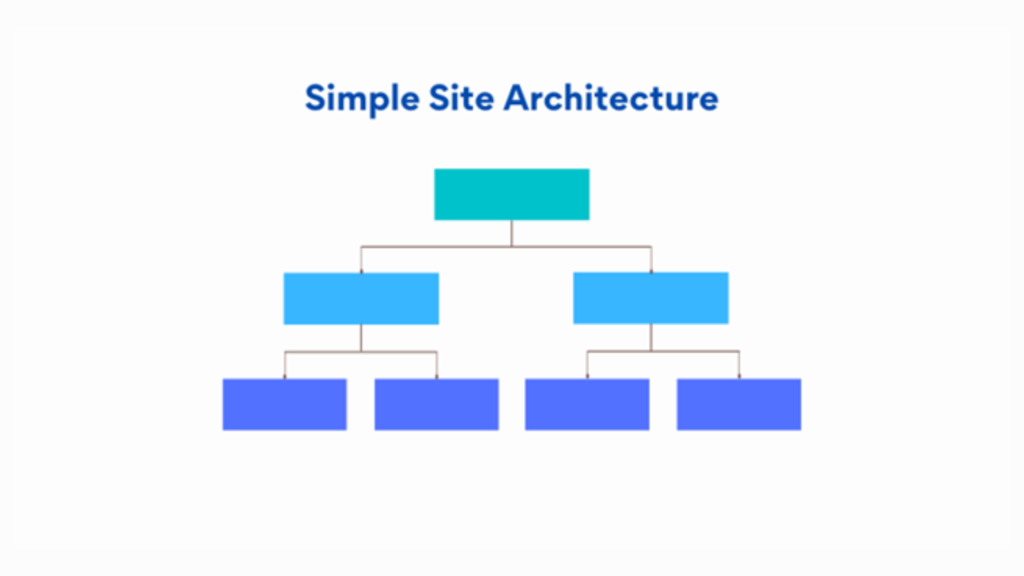What is a Topic Cluster? Why and How to Create Them?
Table of Contents
With time, your website content grows in quantity. You plan for more landing pages, blogs, resources, and other vital content for SEO purposes. In that case, you often forget to maintain the structure of your website to form a hierarchy and relation between the pages.
This will result in a confusing user experience for several readers and search engines, due to no internal links or a lack of cohesive strategies for organizing website content.
According to Hotjar’s research, more than 90% of people prefer to switch to other websites if they find cluttered content. The good thing is, there is a solution to organize this mess and make the web content refined and segmented. And it is – implementing Topic Clusters.
In this guide, we will understand the concepts of topic clustering, why it is necessary for SEO, and how to create them.
What is a Topic Cluster?
A topic cluster is a group of sub-topics centered around the main theme, called pillar content. The content in the sub-topics is linked with the pillar page, also known as cluster pages.
In more simple words, you pick a topic (pillar content) that has multiple sub-topics (cluster pages), which are linked with each other and the pillar page meaningfully.
Implementing the topic clusters on your website will guide search engine crawlers as well as users to understand the depth of the topic and its content. Connected with internal links, these cluster pages provide detailed information about the pillar content.

For example, if you’re writing for the topic “Trip Planning for Australia” the cluster topics will be “Best places to visit in Australia”, “What are the requirements to visit Australia”, “Top attractions of Australia”, “How to prepare for Australia tour”, “Budget required to visit Australia”, etc.
Covering broader information through pillar and cluster pages can help attract more visitors while enhancing the performance of search results.
Why Topic Clustering is Important to SEO?
The concept of topic clusters has become increasingly important in SEO strategy for several key reasons. These all center around establishing a well-structured website, enhancing content relevance, and ultimately, achieving higher search engine rankings.
Here’s a closer look at the benefits:
1. Solidifying Topical Authority
By strategically grouping related content under a central pillar page, you communicate to search engines that your website is a comprehensive resource on a specific topic. This approach fosters your website’s reputation as an authority figure, potentially improving your ranking for various queries related to that subject area.
2. Optimizing Website Architecture
Topic clustering fosters a cleaner and more organized website structure. This improved organization makes it easier for search engines to crawl and index your website, a critical factor in enhancing your visibility within search results.

3. Enhancing User Experience
For visitors, a well-organized website with clustered topics translates to a more intuitive user experience. They can easily navigate to related content, not only improving their overall experience but also increasing the time they spend on your website and reducing bounce rates. Both of these factors are positive signals for search engines.
4. Elevating Page Relevance
Clustering empowers you to target specific keywords and their variations within a broader topic. This focus on specificity increases the relevance of each cluster page to particular search queries, potentially leading to improved rankings for those targeted keywords.
Google’s consistent algorithm updates have cleared its intention to prioritize quality as well as intent-based content that can fulfill users’ expectations.
Understanding Topic Cluster Model
The topic cluster model has emerged as a valuable tool for companies to streamline their content marketing strategy. This approach acknowledges Google’s evolving SEO strategy, which emphasizes ranking websites for topics rather than solely focusing on individual keywords.
Here’s a breakdown of key terminology within the topic cluster model:
1. Pillar Page
The cornerstone of every website within the topic cluster model is the pillar page. This central hub serves as the primary landing page for a content hub, encompassing the broader topic.
Functioning metaphorically like the spokes on a bicycle wheel, the strength of the pillar page is bolstered by the surrounding cluster pages. Within a topic cluster strategy, pillar pages act as “echo chambers” that establish context, relevance, and authority for search engines.
2. Cluster Content
The concept of “content clusters” provides a strategic approach to interlinking your content and bolstering your SEO efforts. Essentially, a content cluster refers to a collection of content pieces all revolving around a singular, central topic.

Each blog post within this cluster delves deeply into the subject matter, ultimately contributing to the overall authority of the pillar page or any transactional pages it may support. The overarching goal is to craft the entire content cluster in a way that maximizes its topical relevance for search engines.
3. Internal Links
Internal links are the foundation of a website’s navigation system. They are essentially hyperlinks that point to web pages within the same domain as the link’s origin. These internal links connect users to different pages on your website, creating a clear hierarchy of information and ensuring users can easily navigate between relevant content.
Importantly, they also play a role in distributing “link equity,” which refers to a webpage’s ranking power. Strategic use of internal links helps distribute this ranking power throughout your website.
How to Create Topic Clusters?
The process of creating topic clusters requires thorough research of the main subjects and understanding the depth of various topics. Here are the steps to follow:
1- Pick a Core Topic
The foundation of your content cluster hinges on the selection of a core topic. Initiate the process with a brainstorming session, considering the following:
- Brand Relevancy: Which topics hold the most relevance and importance to your brand identity?
- Past Performance: Have specific topics yielded positive results in the past? Consider leveraging past successes.
- Content Inventory: Evaluate existing content. Can it be strategically incorporated into the cluster?
- Audience Interests: What topics resonate most with your target audience? Understanding their needs is crucial.
- Competitive Landscape: What topics are your competitors addressing? Analyze their strategies while maintaining a unique perspective.
Depending on your industry and offerings, you might generate numerous topic cluster ideas to populate your content calendar.
2- Perform Keyword Research
Keyword research is the cornerstone of identifying the search queries you wish to rank for (target keywords). This process also involves gathering data to assess ranking opportunities. Effective keyword research is critical for selecting the most suitable topic cluster themes and crafting SEO-friendly content.
Prioritize search intent, which can be categorized as navigational, informational, commercial, or transactional. Topic clusters typically center around keywords with informational or commercial search intent.
Explore the average monthly search volume for your target keywords. This metric indicates the potential reach your content can achieve each month. Initially, prioritizing keywords with a lower difficulty score can help your content rank more prominently within search results.
3- Find Sub-topics for Pillar Content
Both pillar pages and subpages incorporate what’s known as a keyword cluster. This refers to a collection of search terms that share a common intent. By strategically targeting each term within the keyword cluster on a single page, you can potentially rank for a wider range of search terms.
Several tools can be leveraged to brainstorm a multitude of subtopic ideas. Prioritize pillar pages and subpages by evaluating search intent, search volume metrics, and keyword difficulty scores.
Consider incorporating a balanced mix of both highly specific and popular search queries. This strategy can increase your chances of achieving greater visibility in search results more swiftly.
4- Create Quality Content
Once you’ve planned your first topic cluster, you’re ready to embark on the content creation stage. Here, the focus lies on crafting and publishing high-quality content that resonates with your target audience. This content should be informative, authoritative, accurate, and directly relevant to their needs.
A recommended approach is to begin with your pillar page. This page serves as the foundation for your topic cluster, providing a comprehensive overview of the core topic. While creating your pillar page, strategically incorporate links to the cluster pages you’ve identified.
Topic Cluster Examples
Let’s delve into how a topic cluster strategy can be implemented for the broad subject of “Digital Marketing.”
1. Pillar Content: Establishing a Comprehensive Foundation
The initial step involves crafting a substantial article or guide that encompasses all facets of “Digital Marketing.” This pillar content should address key strategies and channels, potentially including:
- Social Media Marketing
- Content Marketing
- Search Engine Optimization (SEO)
- Paid Media Advertising
- Email Marketing
2. Cluster Content: Diving Deeper into Specific Areas
Following the establishment of the pillar page, create additional content that delves deeper into specific subtopics related to digital marketing. Examples of potential blog posts within this cluster could include:
- “Social Media Marketing Strategies for Increased Engagement”
- “Mastering SEO Techniques to Boost Your Website Traffic”
- “Crafting Effective PPC Advertising Campaigns”
- “Best Practices for High-Performing Email Marketing”
3. Internal Linking: Building a Network of Connections
The cornerstone of a successful topic cluster hinges on a strategic internal linking structure. Ensure all subtopic content links back to the main “Digital Marketing” pillar page.
Additionally, it establishes interconnectivity between the subtopics themselves. This reinforces their thematic relevance and strengthens the overall integrity of the topic cluster.
Take Assistance from SEO Experts
By crafting pillar pages that address broad topics and supplementing them with in-depth cluster content on related subtopics, you establish a well-organized and informative resource for your target audience.
This interconnected structure not only enhances user experience but also signals topical authority and relevance to search engines, potentially boosting your website’s ranking and overall organic traffic.
At eSearch Logix, we understand the intricacies of crafting effective topic cluster strategies. Our team of SEO specialists possesses the expertise to guide you through every step of the process, from in-depth keyword research and competitor analysis to content creation and optimization.
By partnering with eSearch Logix, you can leverage our expertise to develop and implement a topic cluster strategy that positions your website for long-term SEO success and attracts a steady stream of qualified leads.







